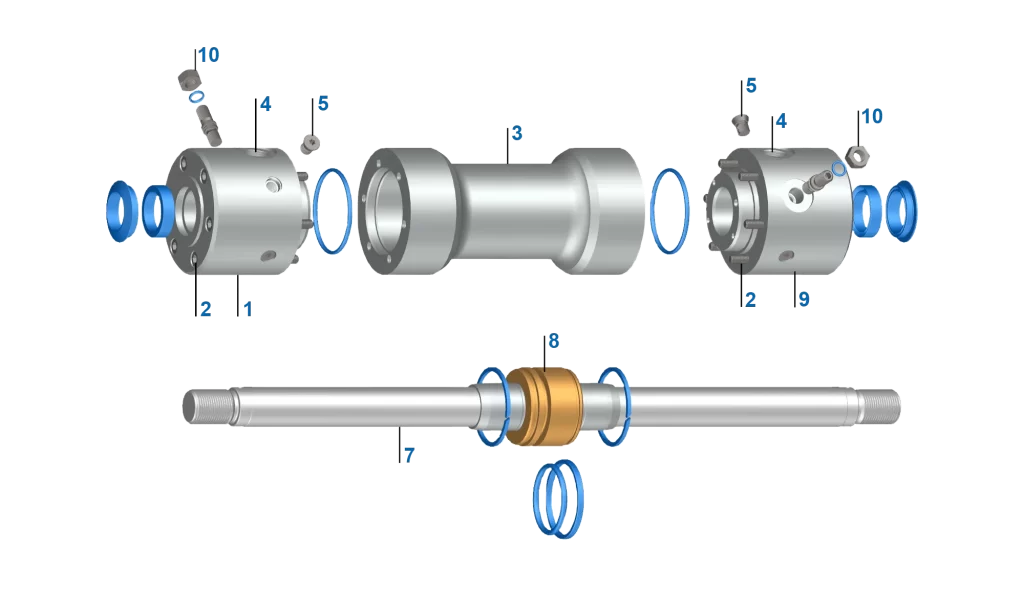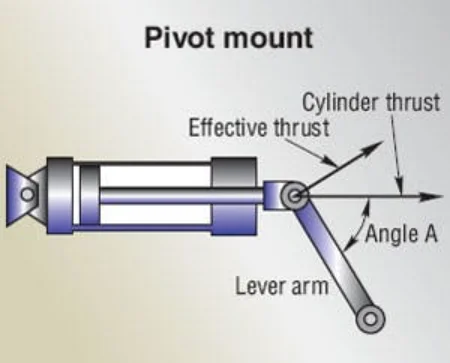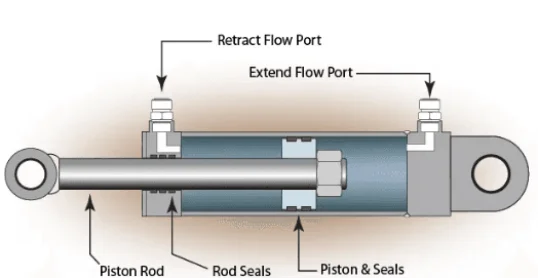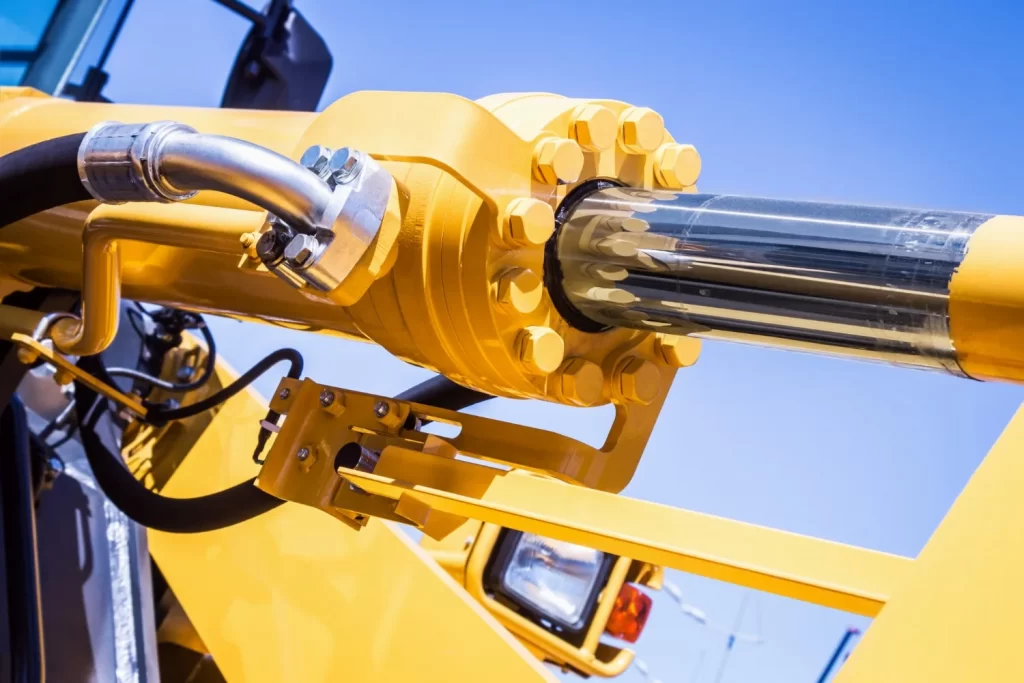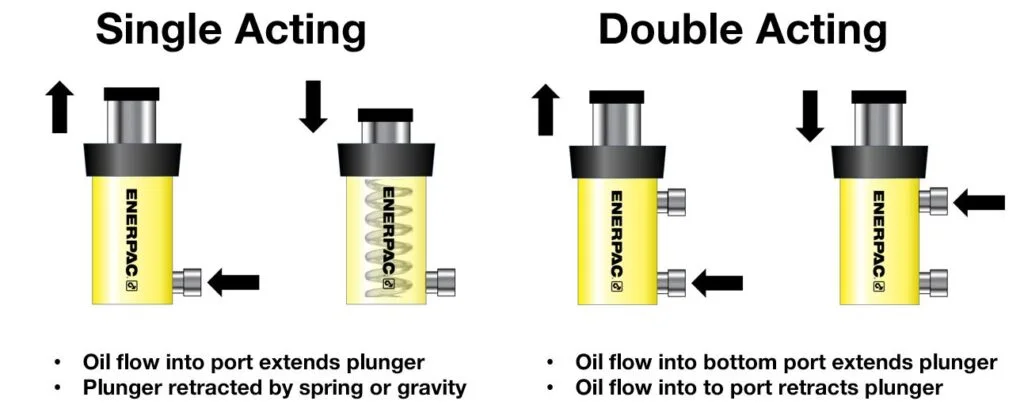Grasping the Fundamentals of Hydraulic Cylinder Installation
Hydraulic cylinders are vital parts in many industries. They supply the power required to lift, push, or pull heavy objects. Knowing how to install them correctly guarantees they work well and last a long time.
Essential Parts of a Hydraulic Cylinder
A hydraulic cylinder includes several key pieces that team up to turn hydraulic energy into mechanical strength. These parts are:
- Cylinder Barrel: This serves as the primary structure where the piston slides forward and backward.
- Piston and Piston Rod: The piston divides the pressure areas inside the cylinder. The rod links the piston to outside machinery.
- Seals: These stop fluid from escaping and keep the system working smoothly by holding pressure steady.
- End Caps: Found at both ends of the cylinder barrel, they lock the internal parts in position.
Every piece contributes to making sure the hydraulic cylinder performs reliably under different situations.
Typical Uses of Hydraulic Cylinders
Hydraulic cylinders are popular in many fields because they are dependable and strong. Some common uses include:
- Construction Equipment: Machines like excavators, loaders, and bulldozers depend on hydraulic cylinders for lifting and digging jobs.
- Agricultural Machinery: Tractors and harvesters employ these cylinders for tasks like plowing and lifting.
- Aerial Work Platforms: Hydraulic cylinders allow exact height changes for platforms used in repair or building work.
- Industrial Automation: They play a big role in factory processes needing repeated motions.
Why Proper Hydraulic Cylinder Installation Matters
Setting up hydraulic cylinders the right way is crucial for them to work as expected. Skipping this step can cause poor performance and expensive fixes.
How Good Installation Affects System Durability
Installing them properly has a direct effect on how long a hydraulic cylinder lasts. When done right:
- The system sees less strain on parts like seals and rods.
- Fluid leaks drop, keeping pressure steady.
- Energy use improves, cutting costs over time.
Following top methods during setup helps companies get the most out of their hydraulic systems.
Dangers of Poor Installation
Bad setup brings serious risks that can harm safety and efficiency:
- Early Wear: Misaligned parts may create uneven pressure, causing quick breakdowns.
- Fluid Contamination: Dirt entering during setup can hurt internal pieces and lower performance.
- System Breakdowns: Wrong mounting or alignment might lead to major failures, creating safety risks.
Recognizing these dangers highlights why careful attention is needed during the setup process.
Top Tips for Hydraulic Cylinder Installation
Using the best methods ensures an easy setup while boosting system performance.
Getting the Workspace Ready for Installation
Before starting the setup:
- Make sure the area is clean and clear of dust or debris that might dirty the system.
- Check that all tools needed for the job are on hand and in good shape.
- Look over the hydraulic cylinder for any obvious flaws or damage before attaching it.
A prepared workspace cuts down on possible problems during assembly.
Keeping Hydraulic Fluids Clean and Free of Flaws
Hydraulic fluids are key to sending power through the system. To keep things running well:
- Stick to fluids suggested by the maker.
- Strain fluids before adding them to remove dirt.
- Often check fluid tanks for signs of dirt or wear.
Pure fluids boost performance and shield internal parts from harm.
Lining Up the Central Axis to Prevent Side Forces
Good alignment is vital to avoid extra stress on parts:
- Make certain the cylinder’s central axis matches up perfectly with linked machinery.
- Prevent side forces by firmly attaching brackets or supports at the right spots.
- Regularly inspect alignment during use to fix any shifts quickly.
Keeping alignment steady reduces wear on seals and rods. It also ensures smooth action under heavy loads.
Technical Tips for Hydraulic Cylinder Mounting
Picking the Best Screws for Mounting
Choosing the right screws is key to keeping a hydraulic cylinder stable and effective. Top-notch screws are needed to handle the huge forces during use. Select screws that match or beat the maker’s standards. Consider things like tensile strength, material type, and rust resistance. Also, ensure the screws work with the mounting surface to stop them from loosening over time.
Applying the right torque matters too. Tightening too much can ruin threads or bend brackets. Not tightening enough may cause wobbling and misalignment. Use a torque wrench set to the advised levels for the best results and long life.
Ensuring Enough Strength in the Base Structure
The base holding a hydraulic cylinder must be tough enough to take operational stress without bending. A flimsy or shaky base can throw off alignment, increase wear, and risk system failure. High-strength steel or reinforced concrete are often used to build solid bases.
Before attaching, check the base for wear, cracks, or uneven spots. Strengthen weak areas if needed to spread the load evenly. Anchoring the cylinder well to the base is also key. Use sturdy bolts and fasten them tightly to stop movement during use.
Keeping Flatness and Parallelism During Setup
Flatness and parallelism are critical for proper cylinder alignment. Poor alignment can lead to side forces that speed up wear on seals and piston rods. To keep things flat:
- Use precise leveling tools to confirm the mounting surface is even.
- Add shims to uneven spots to make a level surface.
- Check alignment often during setup with straight edges or laser tools.
Parallelism between the cylinder’s central axis and connected parts ensures smooth action. It also avoids extra stress on components. Adjust brackets or supports as needed to get perfect alignment before locking everything in place.
Maintenance Advice After Installation for Peak Performance
Regularly Checking Seals and Piston Rods
Seals and piston rods greatly affect how well hydraulic cylinders work. Frequent checks spot early wear or damage, avoiding big repair costs later.
- Inspect Seals: Look for cracks, tears, or changes that might cause leaks.
- Check Piston Rods: Look at rods for scratches, rust, or bends that could affect their job.
- Lubrication: Add the right lubricants now and then to cut friction and extend part life.
Swapping out worn seals quickly keeps pressure steady in the system. Keeping piston rods in top shape boosts overall efficiency.
Tracking Oil Pressure and Fluid Quality Over Time
Hydraulic systems need clean fluids at the right pressure to work well. Dirty fluids can harm parts inside, and wrong pressure can cause issues.
- Monitor Oil Pressure: Use gauges to check pressure against maker’s advice often.
- Test Fluid Quality: Look at fluids for dirt, water, or metal bits.
- Plan Fluid Changes: Swap fluids at times set by makers to keep the system solid.
Staying on top of these things prevents sudden breakdowns. It also keeps hydraulic cylinders running smoothly over time.
FAQs About Hydraulic Cylinder Installation
Why is proper hydraulic cylinder installation important?
It ensures top performance by cutting wear on parts and avoiding costly fixes from early failures.
How can I pick the right screws for mounting?
Go for screws with high tensile strength that meet maker specs and resist rust in working conditions.
What tools help keep flatness during setup?
Tools like laser aligners or straight edges are great for checking flatness and ensuring exact alignment during setup.
How often should seals be checked after installation?
Look at seals regularly, ideally during normal upkeep, to catch early signs of wear or damage.
Can hydraulic cylinders be customized?
Yes! YANTAI SHINING HYDRAULIC TECHNOLOGY CO.,LTD provides custom options to fit specific industry needs.
For more details on top-quality hydraulic solutions for agricultural machinery, aerial platforms, construction equipment, car lifts, environmental vehicles, and more—reach out to Shining Hydraulics today!

